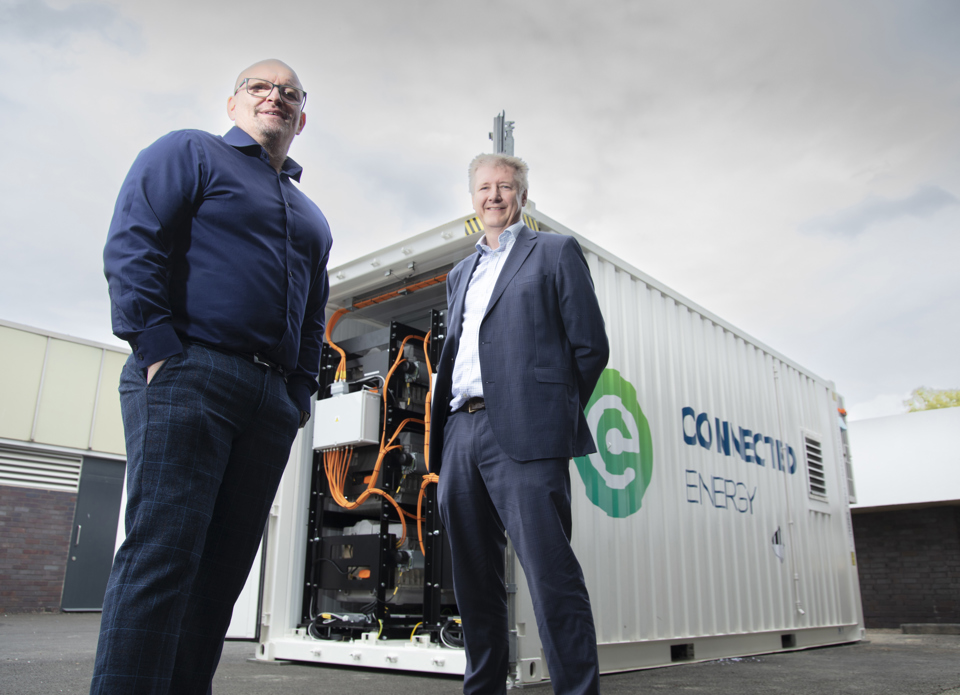Old electric vehicle (EVs) batteries will be used to store solar-powered energy to fuel a fleet of new EVs.
North Tyneside Council is revitalising its Killingworth Site depot, in a multi-million-pound project supported by the European Regional Development Fund (ERDF).
A core aim of this initiative is to futureproof the site for sustainability and energy efficiency.
The depot – which is home to around 1,000 council employees - now includes a solar PV array and car ports delivering 700 kilowatts at peak generating around 600,000kW/h of electricity each year.
There are also more than 40 EV chargers being installed in the coming months, which will increase as the authority transitions a significant part of its fleet to electric over the next few years.
However, realising it would be giving 15% of the solar energy it generated back to the grid, as it had no way of storing the excess energy created during daylight hours, the council turned to Connected Energy in an effort to use this excess electricity to charge its electric vans at night.
Connected Energy has developed a battery energy storage system (BESS), which is already used to support solar storage and EV charging across the UK and Europe.
Its E-Stor system uses batteries from end-of-life electric vans, giving them a second life.
Ian Lillie, strategic facilities manager for North Tyneside Council, with responsibility for the depot, said: “Since installing and commissioning the PV array in February 2023 we have already generated over 100,000kW of green energy. However, we’ve had to give back over 20,000kW to the grid because we can’t store it.
“By using Connected Energy’s battery energy storage system, we can capture that energy and use it to charge our electric vans and indeed the buildings on site overnight. And in the winter, we can use E-Stor to store energy from the grid on lower tariffs at night, to use during the day.
“The combination of solar and BESS should significantly reduce our electricity bills while also cutting carbon emissions from our energy consumption.”
Lillie continued: “E-Stor repurposes batteries from end-of-life electric vans, so the ability to power the vans of the future using batteries from the vans of the past was a compelling argument for us.
“On top of that, the scalability of the E-Stor solution means we can ramp up our use of BESS on site as the council expands its own EV fleet.”
Typically, the batteries still have up to 80% of their original energy storage capacity at the end of the vehicle’s life, making them ideal for this application.
Furthermore, Connected Energy’s intelligent management system enables E-Stor to integrate with solar PV, the grid, and other smart technology like building management systems.
Councillor Sandra Graham, council cabinet member for the environment, said: “Battery storage is an integral part of a decarbonised energy ecosystem, and it is a testament to the site’s inventive approach that this is one of the first systems of its kind to be installed in the North-East.
“The redevelopment of the site has given us an opportunity to take positive action in line with our carbon reduction commitment, and the use of battery storage will allow us to stockpile the energy that our solar plant generates, so that nothing goes to waste.”
Connected Energy has been developing and delivering battery energy storage projects for more than 10 years. The company’s HQ is based on the Newcastle Helix site.
Matthew Lumsden, CEO and founder of Connected Energy said: “The concept for our systems came from our work in the North-East on a number of electric vehicle trials and driven by the mission to find a second life use for EV batteries.
“We now have over 30 systems operating across the UK and Europe - however this will be our first installation in the North-East. We’re proud to see a system in action so close to our HQ and look forward to seeing the benefits it will bring to the location.”






















Login to comment
Comments
No comments have been made yet.